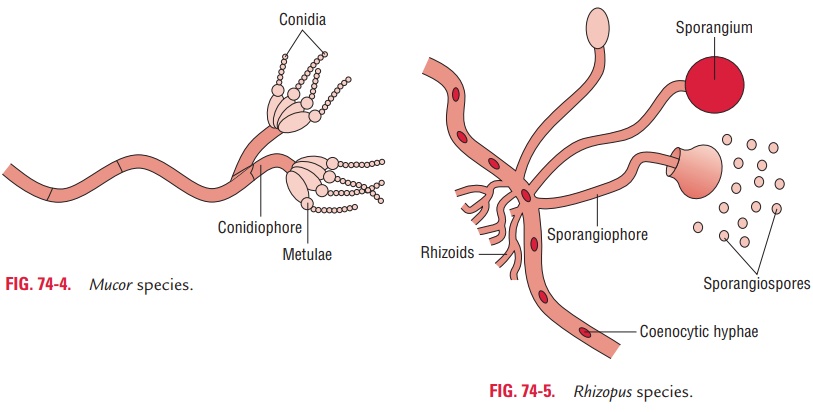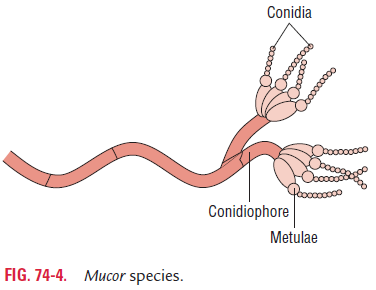Chapter: Microbiology and Immunology: Mycology, Fungi: Opportunistic Fungal Infections
Zygomycosis

Zygomycosis
Zygomycosis, also known as mucormycosis or phycomycosis, is an infection caused by saprophytic molds, such as Mucor (Fig. 74-4), Rhizopus (Fig. 74-5), and Absidia. These fungi are ubiquitous in the environment and generally saprophytic. They rarely cause disease in immunocompetent hosts, but they are the third most frequent cause of invasive fungal infection in immunocompromised patients.

Rhizopus species are the most common causative agents ofzygomycosis in humans. Of many Rhizopus species, Rhizopusarrhizus is the most common agent of zygomycosis.

The fungal agents of zygomycosis have a high degree of predilection to invade major blood vessels, leading to ischemia, necrosis, and infarction of adjacent tissues. They are also known to affect patients with acidosis secondary to renal insufficiency, diarrhea, and aspirin intake. Most of the infections produced by Zygomycetes are acute and are usually fatal despite early diagnosis and treatment. The agents of zygomycosis are transmitted by air, through their asexual spores. In humans, they invade tissues of patients with reduced host defense. From there, they enter the blood vessels and proliferate in the walls of blood vessels particularly paranasal sinuses, lungs, or intestines. This results in infarction and necrosis of tissues distal to blocked vessels.
Zygomycetes cause a spectrum of diseases in humans depending on the immune status of the host and the portal of entry. These cause rhinocerebral zygomycosis, pulmonary zygomycosis, and gastrointestinal zygomycosis. Rhinocerebral zygomycosis is the most common manifestation of disease seen in patients with diabetic acidosis. Fever, unilateral facial pain or headache, nasal congestion, epistaxis, visual disturbance, and lethargy are the common manifestations.
Clinical diagnosis of the zygomycosis is frequently difficult. It requires a high degree of suspicion and a host with appropri-ate risk factors. Laboratory diagnosis is by microscopy, culture, and histopathology:
Amphotericin B is the drug of choice for mucormycosis. Surgical removal of necrotic, infected tissues is frequently useful.
Related Topics